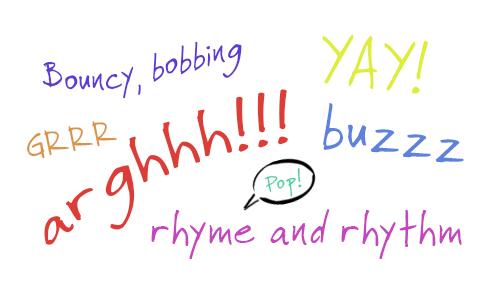Written by Zoe Stace
As adults, I think we can we can simply forget the splendid sounds words make when they slip off our salivary tongues. So what is it about children's books that make us want to put on a character's silly voice or yell the ‘Arrghs’ and ‘Eeeks’ that seem to put the rosiness back into our cheeks?
Half the joy of reading a children's book is the theatrical element that comes with reading them aloud to an audience filled with laughter and giggles.
What makes a great read aloud book? Here are a few things we look out for at Yellow Brick Books.
Rhyme is a common literary technique used to capture a child's attention through the way it makes one sentence flow on to the next. It is important that the rhyme makes sense though, otherwise the effect can be lost and instead complicate the sentence. Try not to force a rhyme when it isn’t working. Instead, keep brainstorming and testing the rhyme aloud!
Onomatopoeia creates fun, action sounds perfect for making your read aloud children’s book pop! No matter what age you are, it’s always amusing to say onomatopoeic words like ‘buzzzz’ or ‘mooo,’ which allow readers to experiment with the pitch and volume of their voice, therefore adding their own unique twist to the story.
Alliteration makes sentences jump off the page and adds an exciting layer to a story. The repetitive sounds create rhythm, which carries the text forward, sets the pace and can also add a comedic effect with its bouncy, bobbing sound, which is sure to make the listener giggle.
Speech bubbles have an incredible impact upon a read aloud book and usually are added by the illustrator for extra emphasis. The use of speech bubbles adds another visual dimension to what the author is already communicating, but does so in a fun and exciting way that allows children to join in the storytelling process. The bubbles are usually short words or sounds that are easily understood and fun to say, for example ‘grrr,’ ‘hmph’ or ‘yay!’
Expressive dialogue characterises the person who is speaking and also presents the perfect script for a reader to take dramatic ques: ‘No Way!!’ the reader might shout.
It is a privilege for readers, whether they are a parent, grandparent, teacher, librarian or child, to bring an author’s words to life with a thrilling spoken rendition of a book. So make sure you remember to read your work, or works that inspire you, aloud from time to time and find enjoyment in the sounds that stories make.
